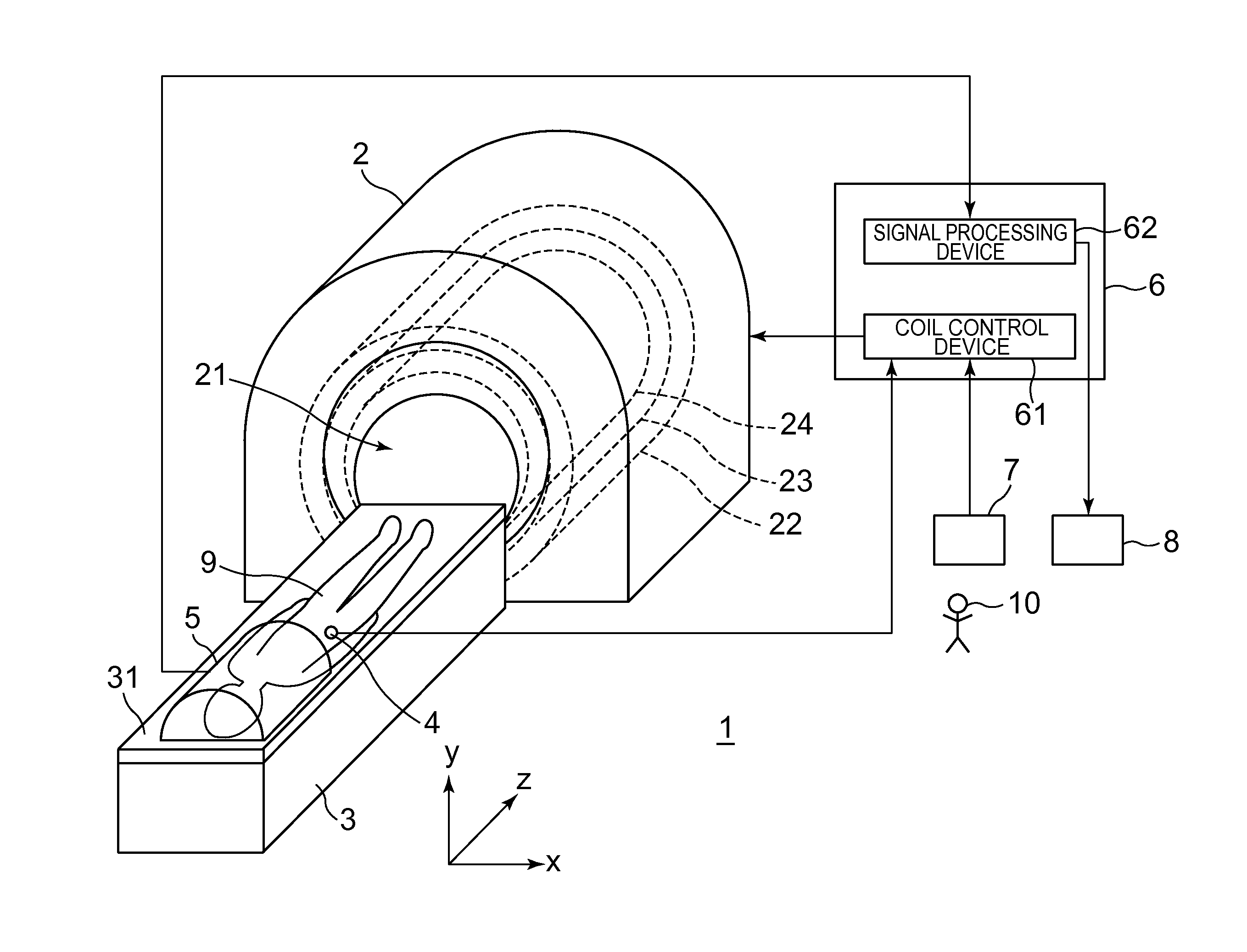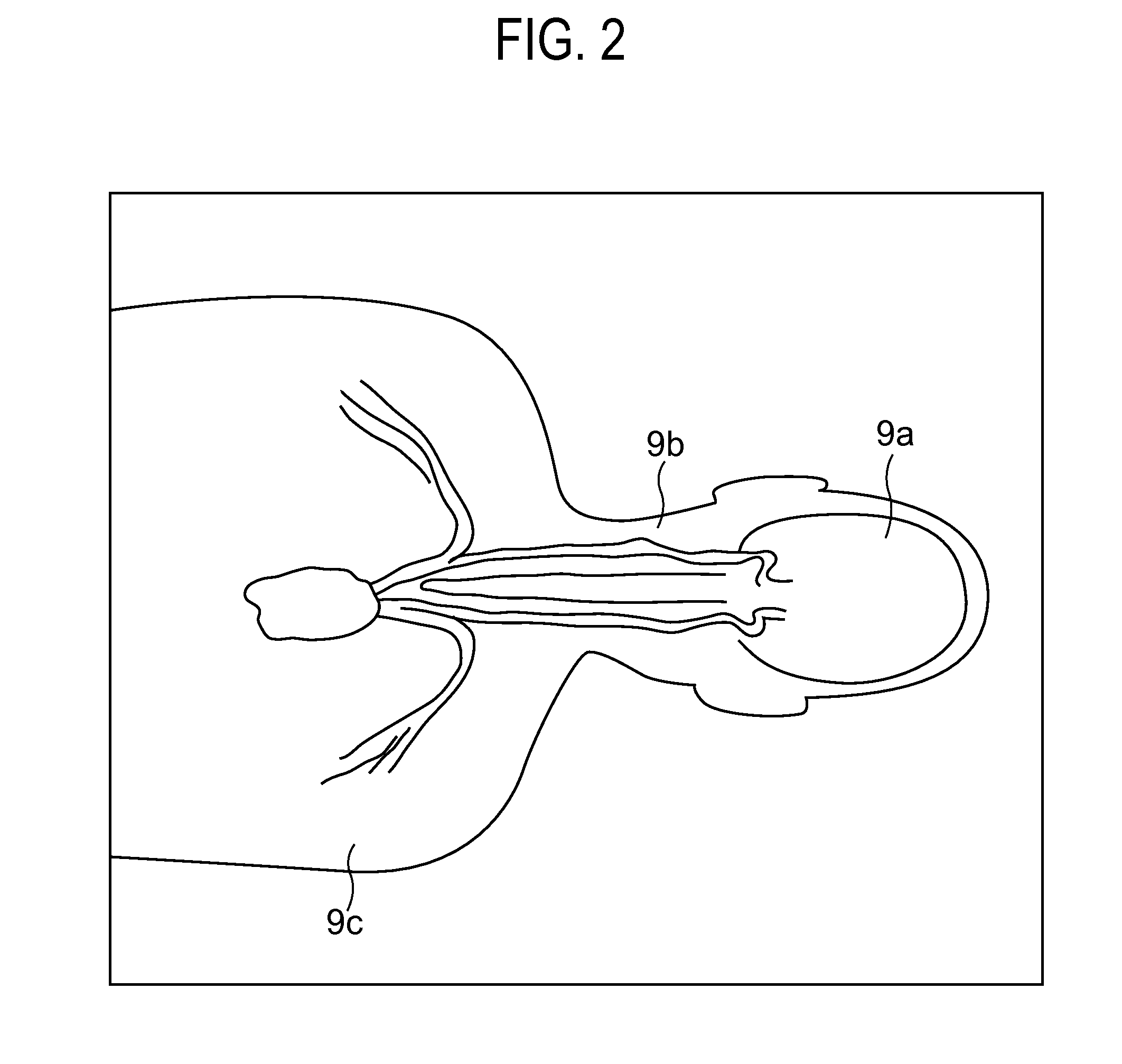Magnetic resonance imaging apparatus and program
a magnetic resonance imaging and program technology, applied in the field of magnetic resonance imaging apparatus, can solve the problem of not wanting to visualize background tissues as much as possibl
- Summary
- Abstract
- Description
- Claims
- Application Information
AI Technical Summary
Benefits of technology
Problems solved by technology
Method used
Image
Examples
Embodiment Construction
[0041]Although a mode for carrying out the invention will hereinafter be explained, the invention is not limited to the following mode.
[0042]FIG. 1 is a schematic diagram of a magnetic resonance imaging apparatus 1 according to one embodiment of the invention.
[0043]The magnetic resonance imaging apparatus (hereinafter called “MRI (Magnetic Resonance Imaging) system”) 1 has a coil assembly 2, a table 3, a heartbeat sensor 4, a receiving coil 5, a controller 6, an input device 7 and a display device 8.
[0044]The coil assembly 2 has a bore 21 in which a subject 9 is accommodated, a superconductive coil 22, a gradient coil 23 and a transmitting coil 24. The superconductive coil 22 applies a static magnetic field BO, the gradient coil 23 applies a gradient pulse and the transmitting coil 24 transmits an RF pulse.
[0045]The table 3 has a cradle 31. The cradle 31 is configured so as to move in a z direction and a −z direction. With the movement of the cradle 31 in the z direction, the subjec...
PUM
 Login to View More
Login to View More Abstract
Description
Claims
Application Information
 Login to View More
Login to View More - R&D
- Intellectual Property
- Life Sciences
- Materials
- Tech Scout
- Unparalleled Data Quality
- Higher Quality Content
- 60% Fewer Hallucinations
Browse by: Latest US Patents, China's latest patents, Technical Efficacy Thesaurus, Application Domain, Technology Topic, Popular Technical Reports.
© 2025 PatSnap. All rights reserved.Legal|Privacy policy|Modern Slavery Act Transparency Statement|Sitemap|About US| Contact US: help@patsnap.com



